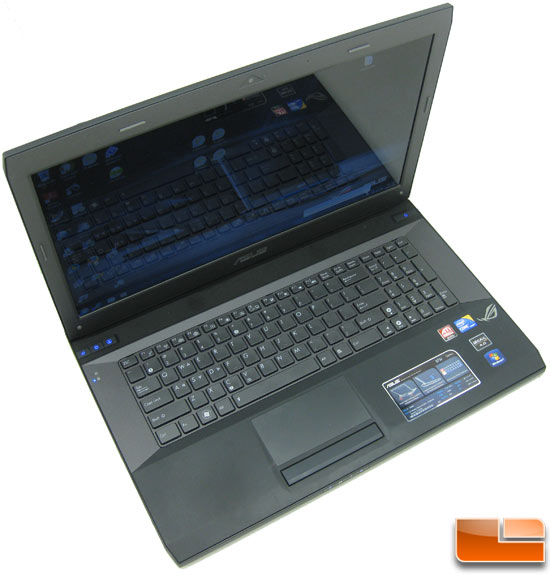ASUS G73Jh DX11 Gaming Notebook Review – ATI Mobility Radeon HD 5870
ASUS G73Jh With ATI Radeon Mobility 5870

Today, we are looking at ASUS’ G73Jh Gaming Notebook. Modeled after the legendary F-117 Nighthawk stealth figher, the G73Jh comes packed with an explosive payload! Featuring ATI’s new flagship mobile processor, gamers can now get the desktop performance king on a notebook. The ATI Mobility Radeon HD 5870 GPU with 1GB of dedicated GDDR5 VRAM promises to outperform the competition to give gamers the best performance in town. Don’t forget that because of this the G73Jh also supports DX11 graphics in order to provide great gaming performance on many of the upcoming DX11 titles for 2010.

But that’s not all! The G73Jh also comes sporting 8GB of DDR3 667Mhz memory and an Intel Core i7 720QM processor to provide all the horsepower of a mobile desktop on the go.

With a massive 17.3″ LCD Full HD 1920×1080 screen, gamers will have the screen real estate necessary to get the best gaming experience a notebook can offer. We also want to make sure everyone notices the new finish on the ASUS G73Jh. The black matte finish finally solves the excessive fingerprint issue we have seen on many notebooks to date. By throwing the high-gloss finish out the window, the G73Jh can offer an elegant look no matter how many people touch the chassis. The ASUS G73Jh is also part of ASUS’ Republic of Gamers branding in order to make sure gamers know what the G73Jh was built for: Gaming.
ATI Mobility Radeon HD 5870 Highlights
Just to give some hightlights of the mobile GPU in the ASUS G73Jh, the ATI Mobility Radeon HD 5870 GPU has about one billion transistors, 800 stream processors, 1GB of GDDR5 VRAM, an engine clock of 700Mhz and is capable of 1.12 TFLOPs of computational throughput. Since the Mobility Radeon HD 5870 GPU is ATI’s flagship mobile processor, it is currently the performance king. Applications that use ATI’s Stream technology will really see a performance boost on this GPU!

Some features of the ATI Mobility Radeon HD 5000 series in general include full DirectX 11 support, power savings by lowering GPU frequencies when at idle and HDMI 1.3a compliancy. We also recently learned from AMD that notebooks utilizing ATI’s Eyefinity technology should begin showing up in the later half of 2010. We should expect to see some notebook OEM’s offering implementations capable of attaching 3 to 4 monitors to a single notebook. Some solutions could also use a docking station to attach even more monitors. Just like the desktop version, the Mobility line is capable of supporting up to 6 monitors off a single card, but it will be up to the manufacturer’s implementation on how many are actually utilized. Lastly, we also confirmed from AMD that users could upgrade the mobile graphics card since they maintain pin compatibility and thermal envelopes between similar mobile GPUs across different series’. So it is possible for a user to upgrade to the next generation of ATI Mobility GPUs so long as the OEM does not solder the GPU to the mainboard.
Given all the buzz around NVIDIA’s Optimus technology in the recent weeks, when we asked AMD directly if they are planning a solution beyond their user-initiated switchable graphics technology, they indicated that they are developing a dynamic solution, but they could not go into any details. One thing they were quick to point out though is that with their current switchable graphics implemenation, the user has full control over when they want to use the integrated graphics versus the ATI Mobility GPU. While it may seem like a step backwards, it is a valid point when compared to Optimus. A solution that offers both dynamic switchable graphics with the ability for a user override would give the best of both worlds!

Comments are closed.